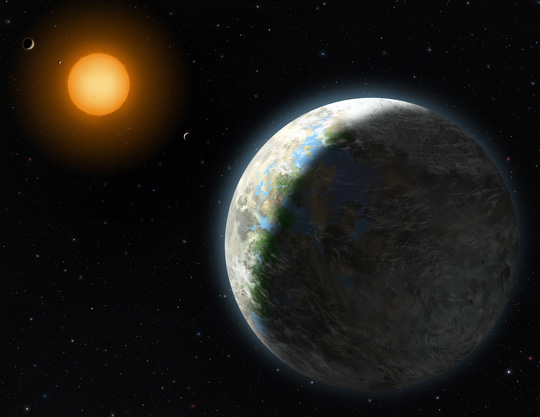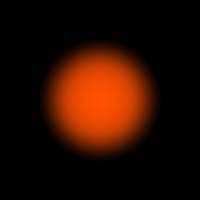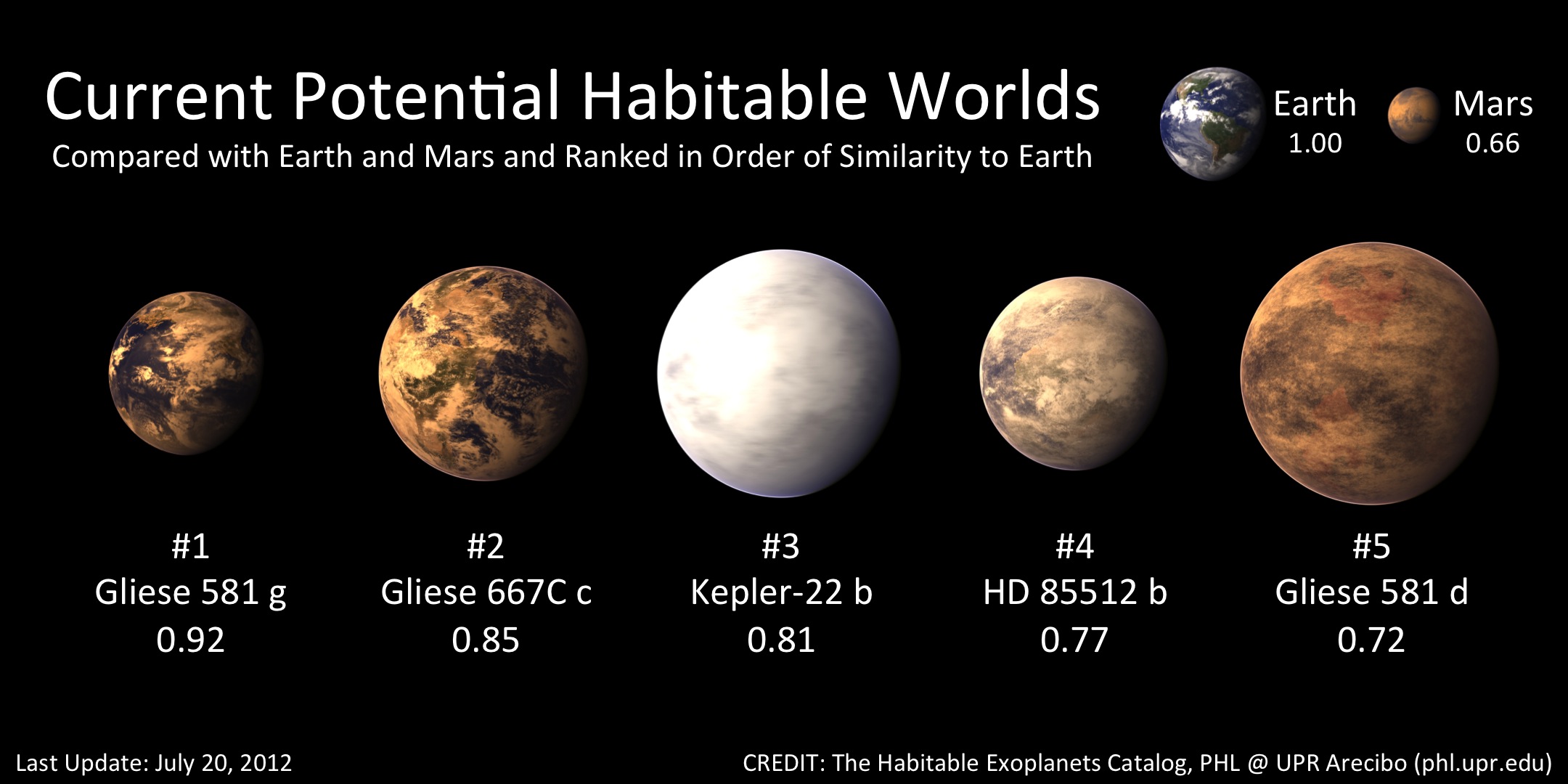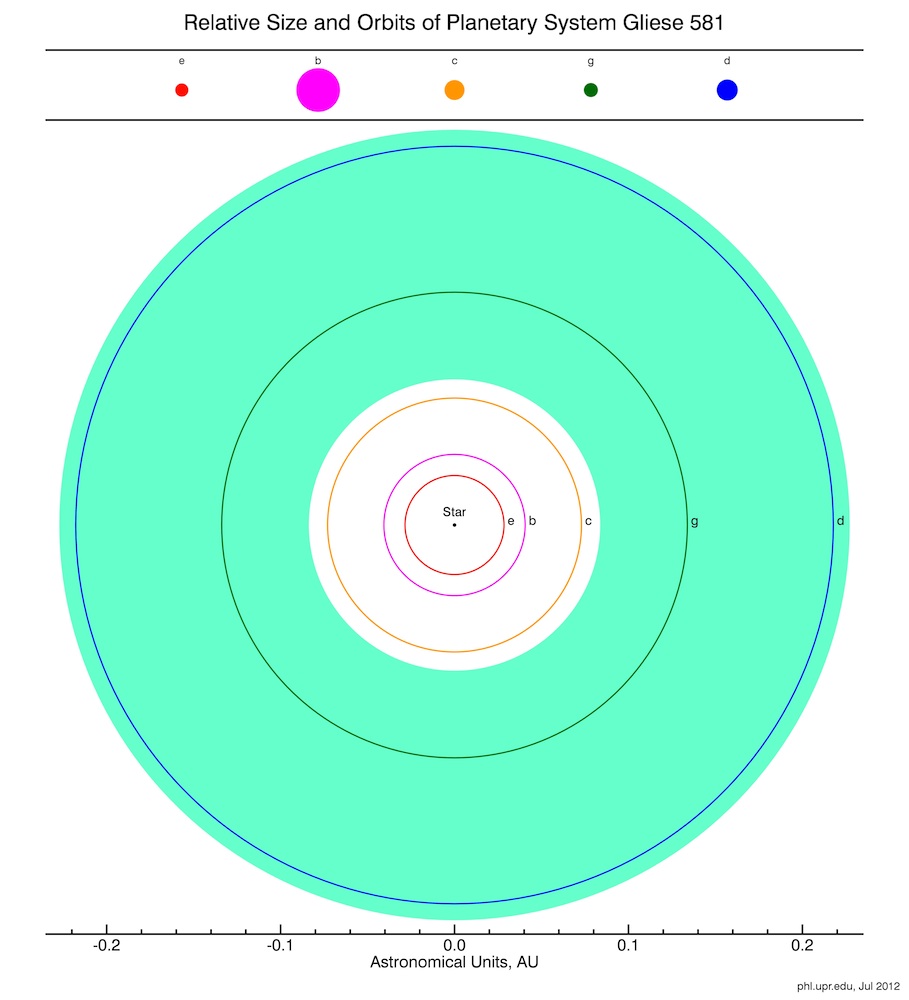Astronomers have announced the discovery of a planet with about three times the Earth’s mass orbiting the nearby red dwarf star Gliese 581. That in itself is cool news; a planet like that is very hard to detect.
But the amazing thing is that the planet’s distance from the star puts it in the Goldilocks Zone: the region where liquid water could exist on its surface!
First, a few things:
- Gliese 581 is a dinky, cool red dwarf about 20 light years away. That’s pretty close as stars go; only a handful are closer. Bear in mind it’s still 200 trillion kilometers (120 trillion miles) away, and that’s still a bit of a drive.
- The planet is one of six now known to orbit the star [that link goes to a PDF of the journal paper]. Apparently, all the planets have neat, circular orbits, so the system seems to be stable. This new planet takes 37 days to orbit the star once, and orbits at a distance about 1/6 the distance of the Earth from the Sun. As far as we know, it’s the fourth planet from its star.
- The planets have all been found by the Doppler method: as they orbit the star, they tug on it. This causes a shift in the wavelength of emitted light from the star. The mass of the planet, its distance from the star, and the shape of the orbit all determine how the light shifts, which is how astronomers found those properties of the new planet.
OK, so that’s what we know. Now let me be clear here about stuff we can be fairly sure about.
If you’re too close to a star, it’s too hot to support liquid water. If you’re too far, it freezes. This defines a rough region from the star — the Goldilocks Zone, for obvious reasons — where liquid water can exist on the surface of a planet. This depends on the star, of course, but also on other factors like the planet’s atmosphere; Venus could have liquid water, but its super-thick atmosphere produces a runaway greenhouse effect which has heated it to 460° C (900° F). If Mars had a thick atmosphere, it might support liquid water! So the planet itself matters here too.
Gliese 581g, as the new planet is called, is in the zone where the temperature is just right. And with a mass of just three times that of the Earth, it’s unlikely to be a gas giant.
However, this does not mean the planet is habitable, or even very Earthlike. It may not even have any water on it at all. For now, we can’t know these things, so beware of any media breathlessly talking about life on this planet, or how we could live there.
There are some things we can speculate on with some solid footing. The orbital period of 37 days puts it pretty close to the star – since the star is a red dwarf, it’s cooler than the Sun, so being closer doesn’t necessarily mean you overheat. But it does mean the star exerts strong tides on the planet, which have the effect of slowing the planet’s rotation until it equals the orbital period. This has almost certainly happened to this planet, so in other words, one day on this planet = one year, and the planet always shows the same face to its star like the Moon does to the Earth.
That makes things a bit dicier for habitability. The side facing the star may get very hot, while the dark side gets very cold. If the planet has an atmosphere that gets mitigated somewhat (the hot air on the day side will flow over to the night side and vice versa, smoothing out the highs and lows in temperature), and may make the planet more clement. However, we have no clue if this planet has an atmosphere at all.
I also want to note that the mass found (3x Earth) is the minimum mass of the planet! It may be more massive, though it’s unlikely to be much more. The Doppler method doesn’t give an exact mass, only a lower limit. That’s frustrating, but that’s the way the math works out.
I’ll note that one of the other planets, Gliese 581d, orbits farther out but if it has a thick atmosphere like Venus it may also be able to support liquid water on its surface. All in all, this could be a very interesting system to study!
But perhaps the most interesting and exciting aspect of all this is what it implies. The Milky Way galaxy is composed of about 200 billion stars, and is 100,000 light years across. The fact that we found a planet that is even anything like the Earth at all orbiting another star only 20 light years away makes me extremely optimistic that earthlike planets are everywhere in our galaxy. 20 light years is practically in our lap compared to the vast size of our galaxy, so statistically speaking, it seems very likely it’s not unique. I don’t want to extrapolate from a data set of two (us and them), but if this is typical, there could be millions of such planets in the galaxy. Millions.
So we don’t know if this planet is all that much like Earth — the surface gravity may be quite high if it’s dense and small, for example, or it may not have any air, or it may have a thick atmosphere like Venus — but what it’s telling us is that smaller, lower mass planets at the right distance from their star for liquid water are almost certainly common in the galaxy.
And that’s big enough news for me.







